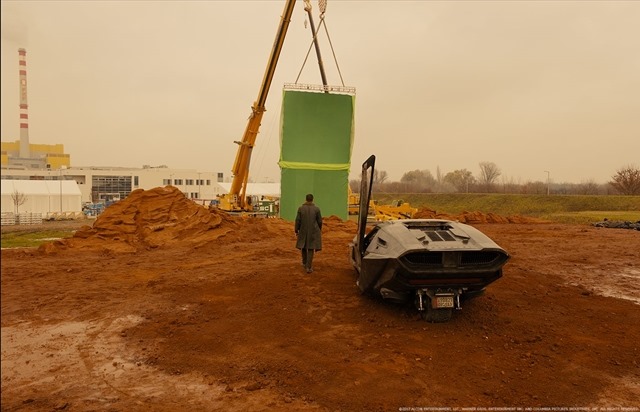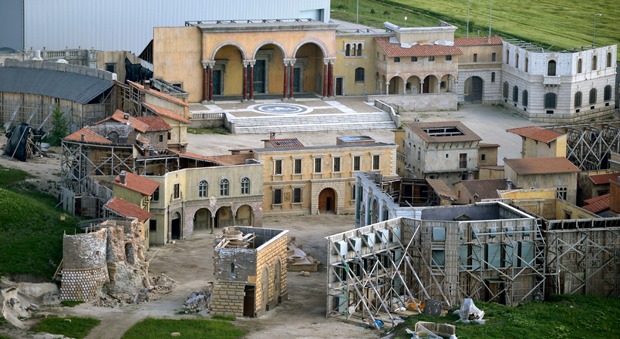Hungary continues to be the “Hollywood of the Danube”

The financial sum that big film studios bring to Hungary can be measured in the range of hundred billion. In addition to the state subsidy system and good shooting locations, the weak currency also favours the Hungarian film industry, but Andy Vajna is sorely missed, writes Hvg.
Hungary is the “Hollywood of the Danube”, said Csaba Káel, the government commissioner for film. Contrary to the favourite trick of many politicians, this is not a case of choosing an indicator in which we can be in the world elite because, besides us, hardly anyone else is interested in it. No, Hungarian film production is truly European class. This good performance consists of two parts: Hungary related films achieve measurable success at Oscars, but at least as important to the economy is that
0.15% of annual GDP of Hungary comes from movies made by major international productions.
Hungary ranks first in Europe when it comes to how much money is spent on film production in relation to total GDP – said Károly Radnai, CEO of OrienTax Tax Advisory Ltd. Our most important rivals are the Czech Republic, Ireland, where the movie infrastructure is not so good, but English is a priority, as well as Romania, Serbia, Slovakia and Poland. Other emerging countries include Lithuania; the biggest hit in the film industry to date is that a housing estate in Vilnius and the Nuclear Power Plant in Ignalina were the venue for the Chernobyl series.
If you would like to see some interesting Hungarian movies, we recommend you to check out our article about the top 10 best Hungarian movies from the 2010s. It is not just us however, BBC’s list of greatest films directed by women has two Hungarian movies on it, you can read about it in this article.
London is one of the most significant film centres in Europe, but the UK and Hungary are not intensely competing as much with each other. Post-production and high-added-value manufacturing processes tend to be made in Great Britain, whereas in Hungary, they are primarily limited to manufacturing activities. For this reason, approximately 80-90% of the film production costs in Hungary are mainly made by American and British film production.

Source: facebook.com/KordaFilmpark/
The data for 2019 is still to be seen, but about 2018 the National Media and Communications Authority (NMHH) reported that 110 Billion Forints (over 326 Million €) had been spent on film production in Hungary. From this:
- 93.3 Billion Forints (276 Million €) went on foreign films shot here,
- 10.9 Billion Forints (32 Million €) went on Hungarian films,
- 5.7 Billion Forints (16.9 Million €) went on Hungarian co-productions.
One of the main reasons for its success is that Hungarian decision-makers have overtaken almost every other country: the Film Act came into force in 2004, with the provision that film companies who conduct their work here receive indirect state support. In order to preserve our competitive edge, the tax rebate has been raised several times, most recently in 2018, from 25 to 30 per cent. All that is required is that at least 80 per cent of the cost of production be classified as domestic. Domestic spending can be accounted for:
- the cost of preparation and reworking and financing,
- the cost of travel to or from Hungary, actors and cast members up to 3 Million Forints (8,900 €) per person, over that, only half of the remaining amount,
- the total amount of royalties and producer fees, but not more than 4% of the cost of production,
- advertising costs until they reach 10 Million Forints (29,600 €) or 2% of their cost of production.
When the tax refund was raised, the Movie Fund reported that every 1,000 Forints of tax refund generated 1,248 Forints of tax revenue.
Károly Radnai estimates that competitiveness is about half dependent on state support and half infrastructure. It is no coincidence that many Eastern European countries are now trying to introduce a system of state aid that has existed here for fifteen years. The Romanian example can be highlighted in our region, where 35% of the state’s support is given to films if the country is not only used as a shooting location, but according to the script, the story is indeed in Romania. For Hungary, apart from the state subsidy system, it means a lot that it is very easy to book a shooting location in Budapest, or that movie crews are happy to spend up to several months in the Hungarian capital.
More recently, Hungary has gained a significant competitive edge: as the forint depreciates, we will become cheaper and cheaper for foreign studios.
For many years, the Hungarian film industry had another great strength: Andy Vajna. Károly Radnai put it “much harder without Vajna” because while the new government commissioner understands the film industry from the Hungarian side, it was remarkable how Vajna “could think according to the logic of American filmmakers”.

Source: facebook.com/KordaFilmpark/
Do not think about it in a way that Vajna would have personally attracted his own friends to the film, but rather to see what the Hungarian regulation is doing, where to remove the obstacles and make the film industry as a whole more competitive. He accomplished that the administration should be a one-stop-shop, no need to go to different locations to license every little thing, or to have a unified price per square meter when renting out the venue, regardless of which district in Budapest the venue is. But he also made sure that the child actors in the movies were not subject to the night ban on child labour, which is quite logical in other professions, but not necesserily movie-making.
According to the expert, minor changes will always be necessary. As an example, he mentioned that it currently takes about two weeks to authorise a drone filming, or that if the cars left behind are needed to be removed when a street is cleared for shooting scenes, in many cases, this is done at the manufacturer’s expense, which they usually do not like, because they think they paid for the empty street. This is not the way most people usually think of the film industry, but it is precisely such matters that could solve many problems with a little simplification.
According to Károly Radnai, however, the best they can do to the Hungarian film industry is not to fundamentally change the rules that affect its operation. Sometimes, even with the best of intentions, a change in legislation can trigger a severe avalanche if it is ill-considered. For example, it will be essential that, if there is indeed a plan to tighten up the Kata system, it should be done with the competitiveness aspects of the film industry in mind. In his view, the cost structure would not be able to bear it if the gross cost of staff and actors’ salaries were to increase significantly. However, with the burdens, an employee would cost twice as much as a Kata entrepreneur. As he said, discussions have already started within the profession to “get ahead of the problem”. Kata is indeed overused but needs to be kept competitive, he explained.
Source: Hvg.hu





